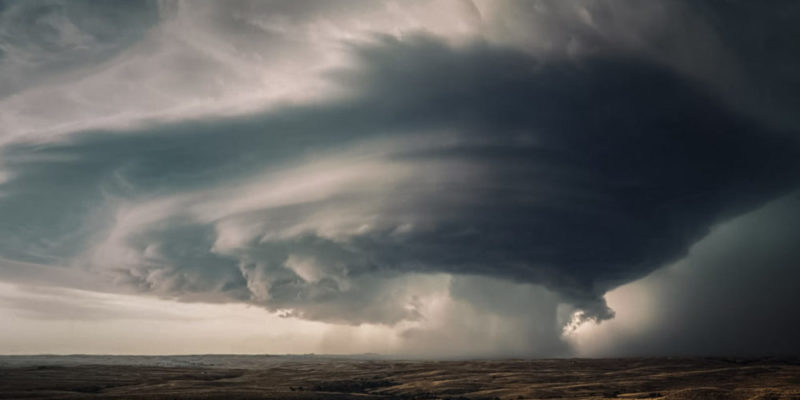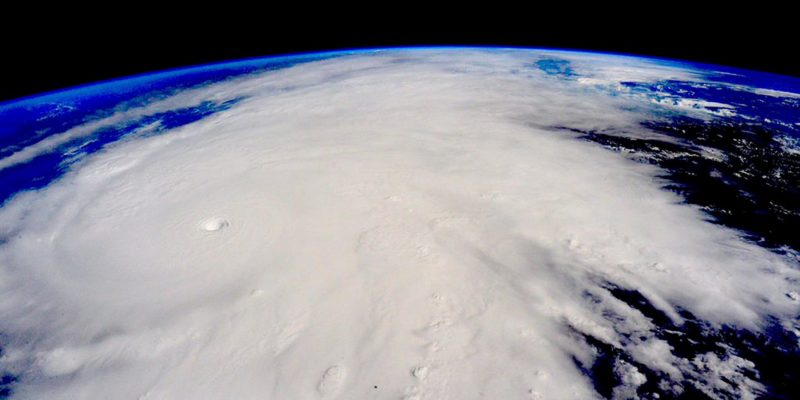We explain what a hurricane is, what its structure and classification is like. Also, what are its general characteristics, consequences and more.
What is a hurricane?
Hurricanes are a type of tropical cyclone characterized by high intensity winds , electrical storms and heavy and constant rain . They are characteristic of the northeastern basin of the Pacific Ocean and that of the North Atlantic , which includes the Caribbean Sea and the Gulf of Mexico .
Hurricanes are very common natural disasters in the region, often causing considerable human and material losses. Many of them, in fact, are preserved in popular memory because of how brutal they were.
However, hurricanes always form within a specific season , and outside of it they do not usually occur except in very particular cases. This makes it possible to anticipate them and take the pertinent measures to minimize their impact.
To be properly considered a hurricane, any cyclone must have winds of at least 119 kilometers per hour .
Origin of a hurricane
Hurricanes originate in the ocean , in warm waters (minimum 26 °C) and in the presence of high atmospheric humidity . The difference in weight between the masses of hot and cold air that the wind then sets in motion, push each other cyclically forming a spiral (warm air inwards, cold air outwards) until a low pressure center is generated. which makes the circuit grow.
structure of a hurricane

Hurricanes have a rotating wind structure , observable from space as a large white spiral, around an eye or low pressure center that can measure almost 50 km wide and in which a relative calm occurs. Around it, on the other hand, there is a wall of rainy winds of the most intense that the hurricane can generate.
nomenclature of a hurricane
Hurricanes are usually named as soon as they reach the minimum wind speed figure required to be considered as such (119 kmph). It is common to use common names for it .
On the other hand, depending on its intensity, a tropical cyclone can be classified as a tropical depression (lower intensity), a tropical storm (medium intensity) or a hurricane (higher intensity).
Similarly, according to their location they can also be called typhoons , when they take place in the seas of the Philippine Islands or China .
hurricane types

According to the Saffir-Simpson scale to measure hurricanes, there are five categories to classify them:
- Category 1. Dangerous sustained winds between 119 and 153 kilometers per hour, despite which it is considered the lightest type of hurricane.
- Category 2. Extremely dangerous winds of 154 to 177 kilometers per hour, which can topple trees and destroy precarious buildings.
- Category 3. Winds that cause serious damage, between 178 and 208 kilometers per hour.
- Category 4. Winds capable of devastating damage, ranging between 209 and 251 kilometers per hour.
- Category 5. Winds capable of generating real catastrophes, which exceed the speed of 252 kilometers per hour. This is the highest known category.
rotation of a hurricane
Due to the Coriolis effect, which gives hurricanes a certain acceleration due to the Earth's rotation, the hurricanes of each hemisphere rotate towards the pole: those of the Northern Hemisphere tend towards the North Pole , rotating counterclockwise; while those from the south tend to the South Pole by turning clockwise .
dissipation of a hurricane

Hurricanes come to an end as soon as any of these conditions occur:
- They enter cooler waters. This often results in loss of heat and cooling from the “engine” that spins the hurricane.
- They hit the ground. The water on land is usually warmer, so it breaks the right balance of temperatures that keeps the cyclone going.
- If they stay in the same area for a long time. Since they work by extracting heat from the ocean surface , by being stationary for a long time they manage to cool it and therefore lose the energy that sustains them.
- When encountering other low pressure phenomena. As low pressure non-cyclonic storms, they could absorb the hurricane (and strengthen themselves, however).
hurricane seasons
Hurricane seasons over the Atlantic Ocean take place between August and the end of October . In the eastern Pacific Ocean, on the other hand, it goes from May to the end of November. In total, the Atlantic Ocean usually sees about five or six hurricanes a year.
Consequences of a hurricane

Hurricanes can throw tons of liters of water over the land as they pass , which directly causes floods , landslides, high waves and overflowing of rivers and lagoons, which makes coastal areas the most vulnerable in their path.
In addition, its strong winds can topple trees and flimsy structures, rip off roofs and poles , thus causing failures in public services and can fatally injure humans and animals .
storm surge
This is the name given to one of the most dangerous consequences of the hurricane-force winds of large cyclones: the growth of the sea on the coast in enormous successive waves . This phenomenon is well described and tends to cause the greatest amount of damage and deaths in coastal populations facing a hurricane. They are similar to tsunamis , but on a smaller scale.
biggest hurricane in history

The largest hurricane in history was Patricia , in October 2015, whose enormous size was perceived from the International Space Station and whose wind gusts reached 400 kmph. This hurricane hit the Mexican coasts of Jalisco, Colima and Nayarit, causing 19 deaths and millions of US dollars in material damage.
The above content published at Collaborative Research Group is for informational and educational purposes only and has been developed by referring reliable sources and recommendations from technology experts. We do not have any contact with official entities nor do we intend to replace the information that they emit.
Veronica is a culture reporter at Collaborative Research Group, where she writes about food, fitness, weird stuff on the internet, and, well, just about anything else. She has also covered technology news and has a penchant for smartphone stories. .
Leave a reply
Your email address will not be published. Required fields are marked *Recent post

Sport: What Is It, Types, Risks, Features, Characteristics and Examples

Dogs: Emergence, Features, Characteristics, Feeding and Breeds

Story: Definition, Elements, Structure, Features and Characteristics

